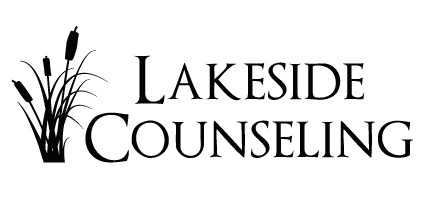Any person exposed to the world of counseling has likely heard of Cognitive Behavioral Therapy (also known as “CBT”). This treatment method is widely used in therapeutic practice all over the world due to extensive research of its success with multiple types of mental dysfunction. However, anybody can benefit from CBT, whether they have a mental disorder or not.
While its name may sound fancy or complicated, the practice itself is quite simple. Cognitive refers to ‘cognitions’ or thoughts, and behavioral refers to… well, behaviors. CBT works by looking at how our thoughts affect our behaviors.
CBT offers more structure than other forms of therapy, which often helps a person quickly work toward goals. In therapy, this practice helps a person identify negative thinking patterns and reframe them to support healthier behaviors. At its core, CBT operates on the premise that our thoughts, feelings, and behaviors are interconnected and can influence one another. It recognizes that distorted thinking patterns and maladaptive behaviors contribute to emotional distress and psychological challenges. CBT aims to identify and modify these patterns to alleviate symptoms and foster personal growth.
Key Principles of CBT
- Cognitive Restructuring: CBT focuses on identifying and challenging negative or irrational thoughts and beliefs. By examining the evidence supporting these thoughts, individuals can reframe them into more accurate and balanced perspectives. This cognitive restructuring helps to reduce distress and promote healthier thought patterns.
- Behavior Modification: CBT places significant emphasis on behavior modification. It involves setting specific, achievable goals and implementing behavior change strategies to promote adaptive behaviors and habits. Through systematic desensitization and exposure techniques, individuals confront and gradually overcome fears and avoidance behaviors.
- Skill-Building: CBT equips individuals with practical skills to cope with challenges effectively. These skills may include relaxation techniques, problem-solving strategies, assertiveness training, and effective communication. By acquiring and practicing these skills, individuals gain a sense of mastery and empowerment over their thoughts, emotions, and behaviors.
Benefits of CBT
- Evidenced-Based Approach: CBT is extensively researched and has demonstrated effectiveness in treating various mental health conditions, including anxiety disorders, depression, phobias, and post-traumatic stress disorder. Its evidence-based nature provides individuals with confidence in the therapeutic process and increases the likelihood of positive outcomes.
- Focus on the Present: CBT emphasizes the present moment, focusing on the here and now rather than delving excessively into past experiences. This practical approach allows individuals to identify and address current challenges, providing a sense of control and immediate relief.
- Collaborative and Active Process: CBT is a collaborative therapy, with the therapist and client working together as a team. The therapist provides guidance, support, and expertise, while the client actively engages in the therapeutic process. This active involvement fosters a sense of ownership and empowerment, enabling individuals to take charge of their own growth and well-being.
- Versatility and Applicability: CBT’s adaptable nature makes it suitable for a wide range of individuals and situations. It can be integrated into individual therapy, group settings, and even self-help practices. CBT techniques can be utilized in various life domains, such as work, relationships, and personal development, making it a valuable tool for overall well-being.
Cognitive-Behavioral Therapy (CBT) has emerged as a powerful therapeutic approach that empowers individuals to transform their thoughts, emotions, and behaviors. By challenging negative thinking patterns, modifying maladaptive behaviors, and developing practical coping skills, CBT helps individuals alleviate distress, build resilience, and achieve positive change. Its evidence-based nature, focus on the present, collaborative process, and versatility make it a valuable resource for enhancing mental well-being. Whether you’re facing anxiety, depression, or seeking personal growth, CBT offers a roadmap to empower you on your journey toward a healthier and more fulfilling life.
The length of time it takes to change a behavior depends on a variety of factors including its type, severity, how long it has been occurring, the effort you put into practice, and your environmental support. We offer in-person therapy and counseling in Seabrook, TX and virtual telehealth therapy for Texas residents. If you or someone you know wants more information about CBT, schedule an appointment or free 15-minute consultation today.
For further reading, you can visit the American Psychological Association.

